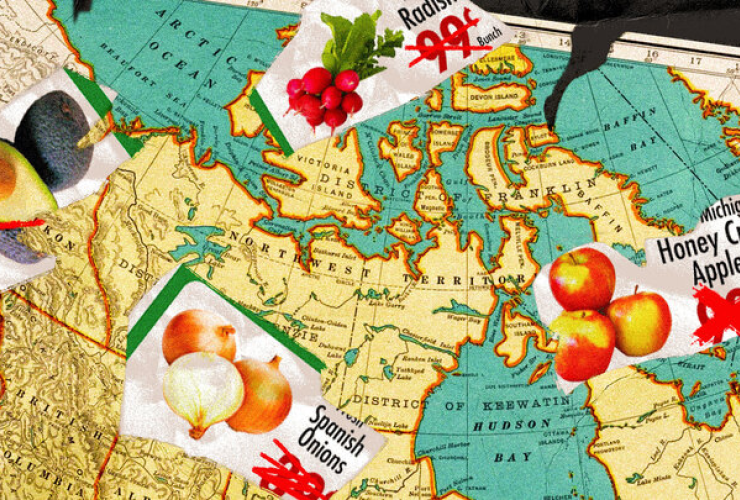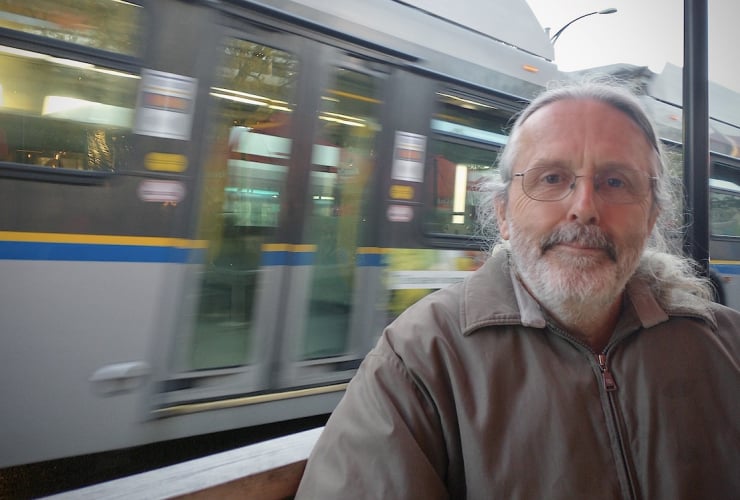A lack of affordable, convenient, frequent and reliable options for travel between many Vancouver Island and Sunshine Coast communities was the top obstacle identified in a recent regional transportation survey.
Over the summer, the B.C. government funded extensive community consultations to study passenger transportation gaps faced by Indigenous, small, rural and remote communities on Vancouver Island and parts of the coastal mainland, as well as B.C.’s north and its southern Interior.
Poor connections between coastal communities, like ferries linked to transit, insufficient public transportation options to airports or harbours, and a lack of safe, accessible or low-emission services were other roadblocks highlighted in the Island Coastal Inter-Community Transportation study.
The findings were based on consultations in most communities or regions on Vancouver Island, the Central and Sunshine coasts and surrounding small islands led by the Island Coastal Economic Trust (ICET) and the Vancouver Island Economic Alliance (VIEA).
Transportation in the Greater Victoria Area and existing public transit services in individual communities weren’t evaluated.
Various communities identified the ongoing loss of private inter-city coach services and the lack of a unified transportation corridor along the mainland coast or Vancouver Island, the survey noted.
One example is numerous communities on Vancouver Island north of Campbell River have never had inter-city transport or lost an affordable option when private coach company Wilson’s Group withdrew service in 2021 along smaller routes.
Rural towns of Gold River, Tahsis, and Zeballos don’t have any passenger transportation south to Campbell River — the North Island’s economic and health service hub. Neither does the neighbouring Nuchatlaht Tribe, Mowachaht-Muchalaht, Ehattesaht, and Ka:’yu:’k’t’h’/Che:k:tleset’h First Nation communities.
There is no public transit corridor on the North Island between Campbell River to Port Hardy or Port McNeill, hubs for nearly 60,000 residents, numerous small outlying communities and a dozen First Nations.
The only passenger service for the 2.5-hour trip between the key North Island cities is a shuttle bus run by a taxi company that costs $200 return.
Overall, residents participating in the regional survey said they primarily relied on transportation to other communities to shop, work, attend school, connect with family or friends and recreational activities.
Residents from smaller communities, business owners and First Nations surveyed said limited transportation options made it hard to find employees, work and drive economic development in their communities.
Participants emphasized transportation options needed to be convenient, frequent and reliable.
“While [respondents] acknowledged the argument frequently made that existing services have low ridership or are not being used, they also raised that these three foundational elements must be in place for ridership to increase,” the transportation report said.
The high cost of travelling between communities was also a barrier and a main “grievance” for many people, the survey found.
Residents in remote communities said the lack of grocery stores or the high cost of food means they have to travel to larger communities for shopping and supplies.
Passenger rail service was widely supported in the community engagement session as a more cost-effective, reliable, safe and environmentally friendly vision for the future, the report noted.
“With rail serving as a central spine running North-South on Vancouver Island, and East-West from Nanaimo to Port Alberni, participants suggested that buses and other transportation modes could run along the rail line to connect communities,” the report said.
“Rail would serve locals and tourists alike, helping to open up communities on the island to economic, employment and educational opportunities.”
The report concluded that a transformative change in travel between communities was needed.
Participants highlighted the need to collaborate between multiple layers of government, First Nations and the private and non-profit sectors.
A frequent proposal was to create an inter-regional transportation authority to tie various transportation modes, foster collaboration and fulfil an integrated vision for a provincial passenger network that relied less on personal vehicles.
Increased provincial funding to help meet transportation gaps the private sector cannot fill was another key finding.
“Government subsidies are needed to fill inter- and intra-community transportation gaps; the private market would have provided these services if they were financially feasible,” a Tofino resident told the survey.
Some other potential solutions suggested by residents included expanding the reach of ride-hail or car-share programs into smaller communities, although high startup and capital costs in contrast to changes due to seasonal demand were flagged as challenges.
People participating in all the engagement sessions endorsed improving active and alternative transportation corridors and transportation hubs at bus and ferry terminals, especially related to bicycles.
Frustrations with the province’s lack of focus or funding for transportation solutions that reduce society’s reliance on personal vehicles also surfaced, though electric vehicles would make positive reductions in emissions, the report said.
“We need a cultural shift away from our reliance on personal vehicles — providing viable transportation options is the first step to successfully shifting this mindset,” said a participant in the report.
Comment or answers to questions weren’t available from the Ministry of Transportation on Vancouver Island service gaps before Canada’s National Observer’s publishing deadline.
Rochelle Baker / Local Journalism Initiative / Canada’s National Observer
I have been interested in the
I have been interested in the Esquimalt & Nanaimo Railway (ENR) for over a decade as a symbol of what is wrong with our transportation system (focused on Vancouver Island, but symbolic of Canada's plight) and what can be done about it. This report seems to have tapped crucial public support for 21st Century rail on the Island.
The ENR corridor is still largely intact as a previously assembled land asset. One audit several years back when I last checked placed a value of $330 million on the entire corridor, a sunk cost that will not have to be paid for again. The corridor touches the heart of the major population centres on the Island's east coast with branches to Nanaimo and Lake Cowichan and stretches 245 km from Victoria to Cumberland.
There is a long and very interesting history on the ENR, which was the last leg of the national railway that brought BC and the Island into confederation. The Dunsmuirs were granted 8,000 square kilometres of land with the proviso that they build a railway and extract coal and timber from the land, which they did and became uber rich.
Today, the land grant has been carved up, farmed, settled and urbanized, and logged to death in many places by the private forestry companies that now own the largest swaths of land. And all that was accomplished without any remuneration or legal representation for the original Indigenous owners, who were shunted into communities barely larger than their original ancient village sites. Very shameful.
The ENR rail service ceased along the vast length of the corridor, except for some rail barge yards and active short stretches of track in the Nanaimo area. Everywhere else the rails are rusting, the heritage brick railyard shops and wooden stations are crumbling and the weeds and alders are taking over. A derelict transportation corridor is still a corridor, and rail offers extremely efficient service.
It is painfully obvious to urbanists like me that the corridor is one gigantic opportunity to build a modern electrified intercity rail backbone on the Island, which could also double as a renewable electricity transmission corridor. Off shore wind north of the Island has great potential to supplement BC's and the Island's hydro legacy.
It is doubly painful to see the car centricity and dependency grow exponentially every year. The island highway and the three main BC Ferries routes are all designed to uphold the hegemony of the Almighty Car. The largest ferries are floating traffic jams. The ferry terminals feature nothing less than massive parking lots and heavy industrial loading ramp structures. Despite the tens of billions in public money put into the terminals and the approach highways, public transit connectivity is pathetic. Anyone who thinks modern rail service is "too expensive" needs to make the comparison to what has been spent on highway and car ferry infrastructure on the Island and mainland, modelled from the 1950s traffic planner mindset. Recent overpasses on the Trans Canada highway in Greater Victoria alone are on the cusp of $100 million each.
The most obvious strategy to initiate decent, bankable, permanent ridership on an Island commuter rail service is to run branch lines directly to the ferry docks and foster walk-on walk-off ship-rail service under one roof. BC Ferries passenger volumes topped six million people per annum before the pandemic descended on the world, and that is a captive market for high quality transit service -- on just the car-carrying ferries.
If a public passenger ferry service were initiated with a rail connection from day one then a downtown harbour to downtown harbour service could become a regular shuttle that will allow millions of Mainland-Vancouver Island passengers to use a multiple mode public transit service without getting wet in the rain or taking a compact car at nearly $200 return for two people. Vancouver's Waterfront Station is located on the downtown harbour and already has two rapid transit lines and a well-used harbour ferry service (SeaBus) to congregate in one location under one roof. Walking to a hotel, office, store or a condo from the station is already the common practice of millions of riders every year in Vancouver.
A revamped modern commuter rail line on the Island would no doubt soon find a large demand for an extension to Campbell River being proposed, with coach service beyond. The key is to offer a better service than by private car if you aren't travelling with enormous amounts of luggage. Displacing the car is a good thing for society, and the vast majority of cost-benefit analyses conducted all over the world proves it, especially if the rail service extends to freight.
Indigenous communities were ignored when the ENR was built in the 19th Century. A modern rail service would naturally invite First Nations in a full partners with the federal government, for it was the national government that first initiated the concept and that now needs to reconcile the damage done to Indigenous communities.
Reconciliation and climate change are two of the best reasons to protect the ENR corridor today and plan for a major upgrade to realize 21st Century transit standards and have a say in the quality of the cities and towns it will serve.






Comments